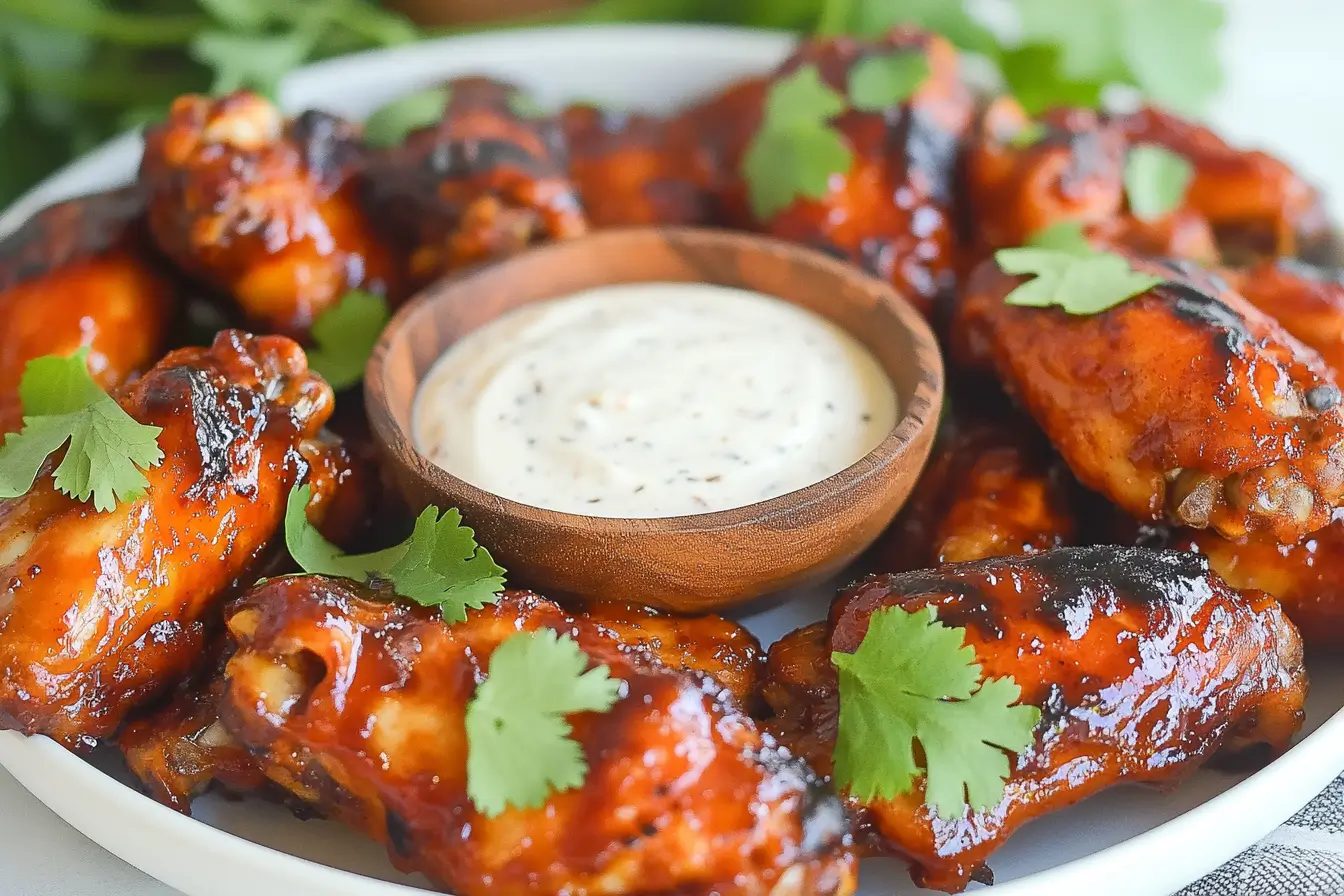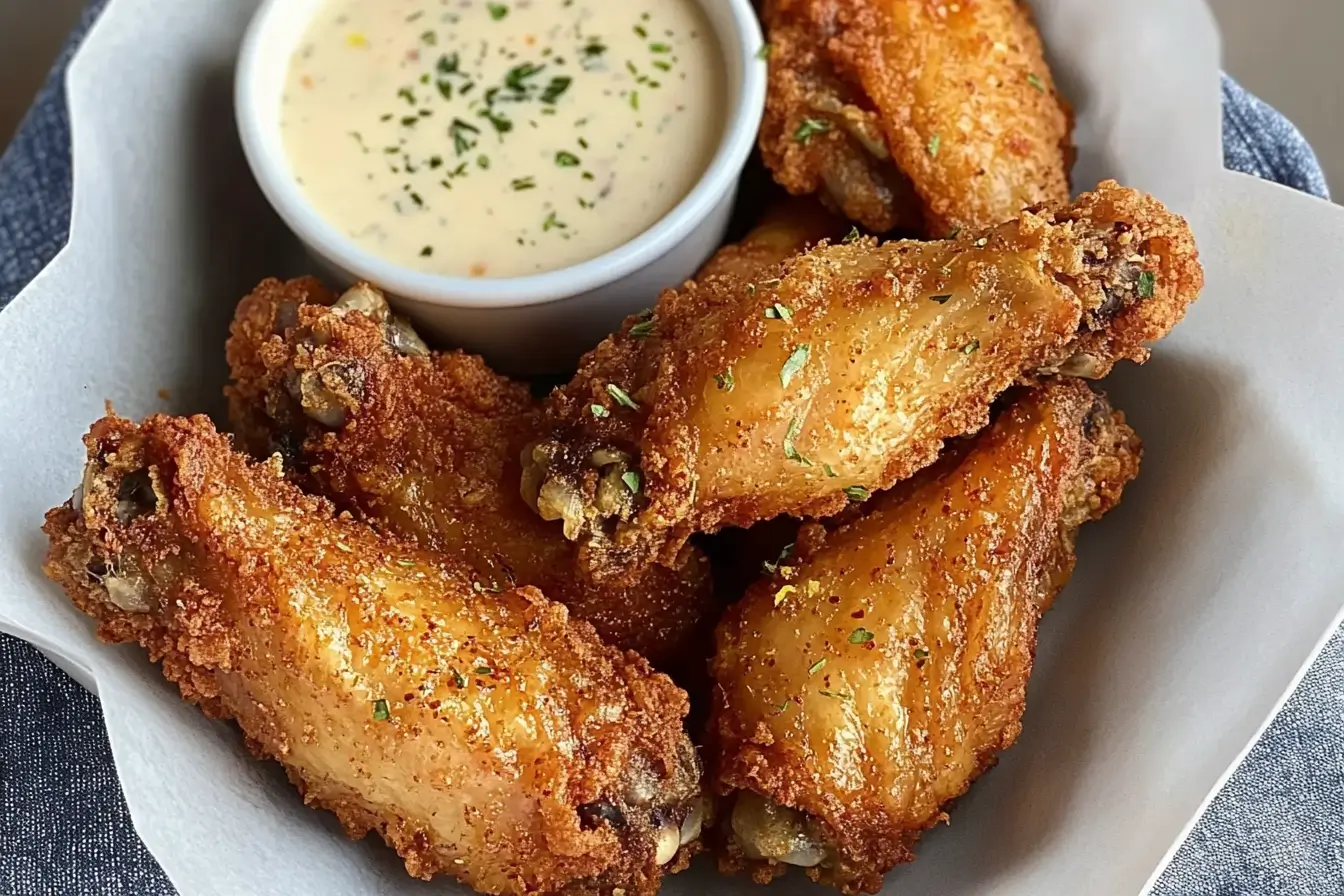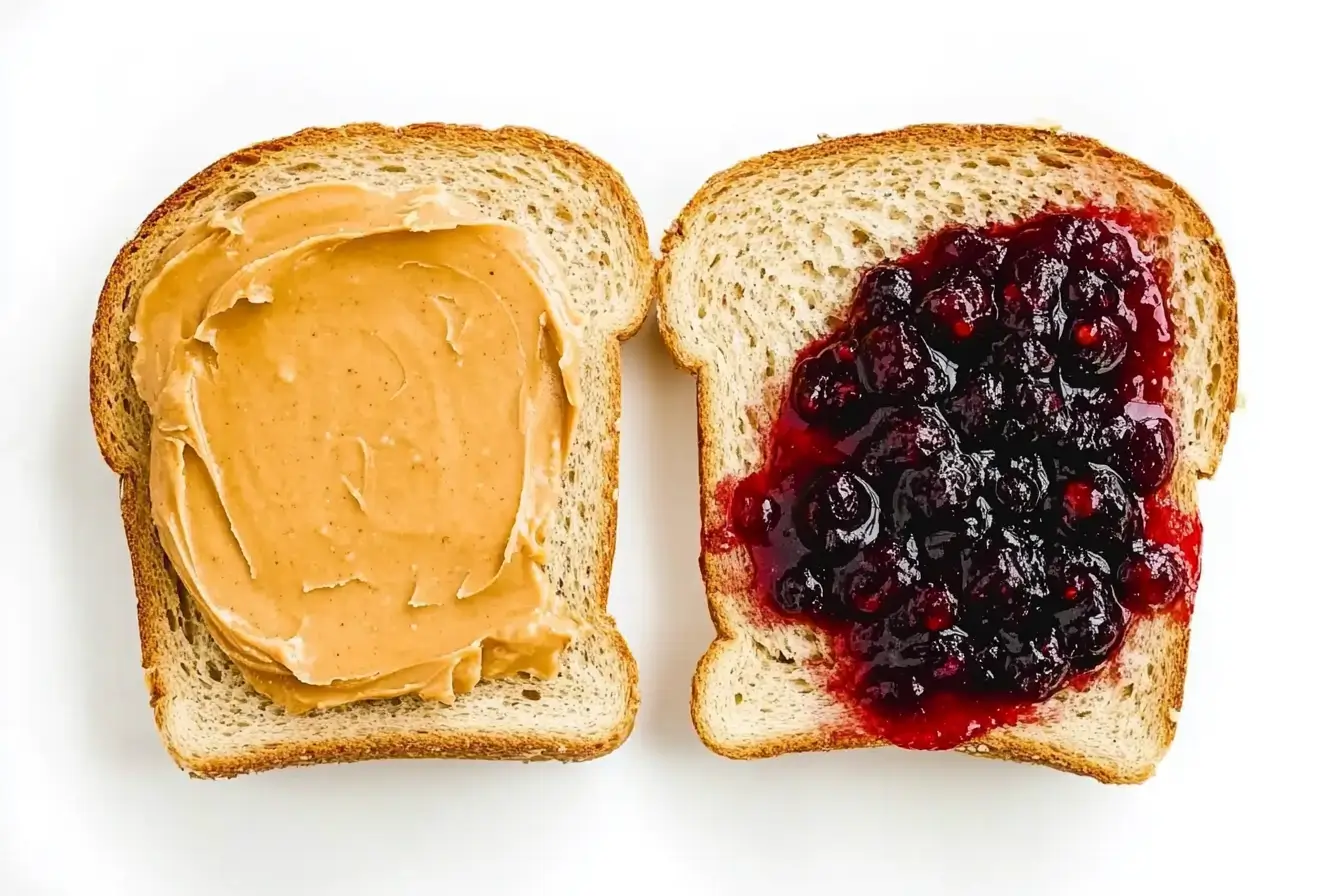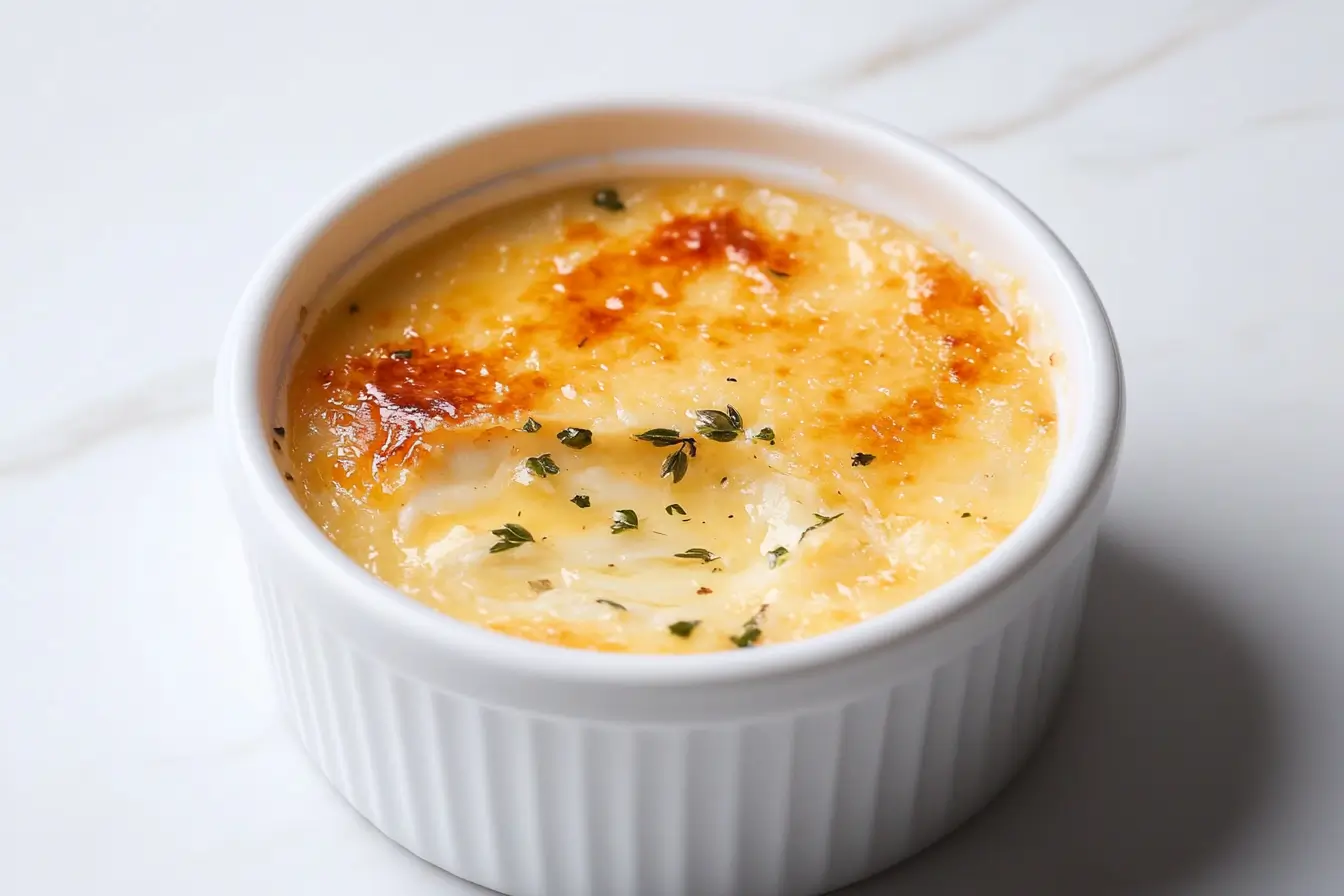Buffalo wings can be fried or baked, each method offering different results. We’ll break down how to get crispy skin and juicy meat no matter which method you choose.
For a healthier option, bake your wings at 400°F for 45 minutes, or until they reach 165°F internally. Serve with carrots, celery, and ranch or blue cheese sauce.
Let’s dive into frying and baking methods to help you pick the best one for your taste and get the perfect wings every time!
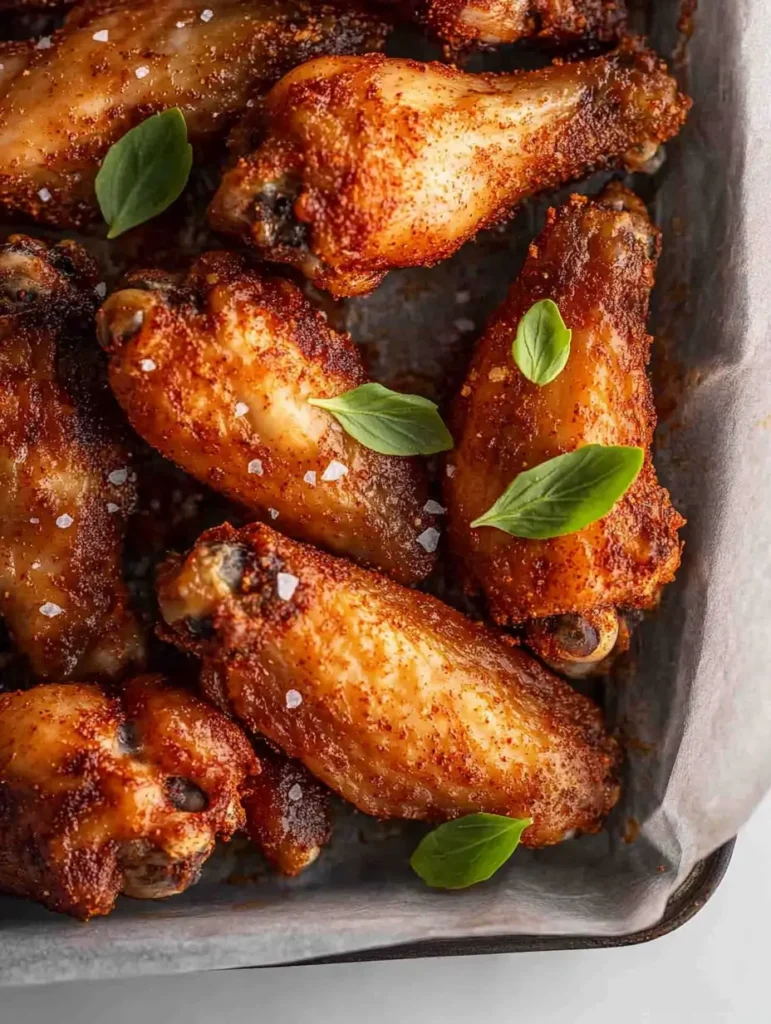
The History and Evolution of Buffalo Wings
Buffalo wings have a rich history starting in Buffalo, NY. The story begins at the Anchor Bar, opened in 1935. Today, Anchor Bar has 17 locations across the U.S., including four in Texas.
Origin Story: From Buffalo, NY to National Phenomenon
The original buffalo wings and sauce were created 60 years ago at Anchor Bar. But, there’s a twist. John Mack Young, who passed away in 1998, also claimed to invent Buffalo chicken wings. He started serving them in his restaurant, Wings and Things, in 1963.
Traditional Preparation Methods
Traditional buffalo wings are deep-fried and coated in spicy sauce. Young’s wings were special, using a tomato-based “Mambo Sauce” that was “lip-smacking” and “liver-quivering.” This method quickly became popular, leading to Wings and Things expanding to five locations.
Modern Wing Culture
Today, buffalo wings are a favorite on sports bar menus and pub appetizers lists. Americans eat nearly 1.5 billion pounds of wings during Super Bowl weekend. In fact, 37% of Americans say wings are their favorite game-day food, beating even pizza.
The love for chicken wings has led to many flavors and cooking methods, including baking. With 76% of U.S. restaurants offering wings, it’s clear buffalo wings have become a national favorite.
Understanding Buffalo Wings: Anatomy and Preparation
Buffalo wings are a big hit at tailgating parties and loved in many wing recipes. To make the best chicken wings, knowing their anatomy and how to prepare them is important.
Wing Sections: Drumettes vs Flats
Chicken wings have two main parts: drumettes and flats. Drumettes look like mini drumsticks and have more meat. Flats are the middle section with two bones and tender meat in between. Both parts are delicious and often sold together in wing recipes.
Quality Indicators for Raw Wings
When choosing chicken wings for your recipes, look for these signs of quality:
- Fresh smell with no odor
- Plump appearance without bruises
- Pinkish color without dark spots
- Uniform size for even cooking
To prepare wings, pat them dry with paper towels. This step is crucial for crispy skin, whether you’re frying or baking. Season your wings with salt and baking powder for extra crispiness. For 3 pounds of wings, use 1 3/4 teaspoons of kosher salt and 1 1/2 teaspoons of aluminum-free baking powder.
The Great Debate: Fried vs Baked Buffalo Wings
Fried buffalo wings are known for their crispy exterior and juicy interior, often enhanced by double frying to achieve the perfect crunch. On the other hand, baked buffalo wings are a healthier option, less messy to prepare, and require minimal cleanup.
For baked wings, cook at 325°F until done, then broil to add crispiness. While they may not be as crispy as fried wings, they still pack great flavor and appeal to health-conscious eaters.
Wing Variety Matters:
- Fried wings: crispier, juicier, traditional
- Baked wings: healthier, less mess, nearly as crispy
- Bone-in: lower price, more prep
- Boneless: convenient, versatile, pricier
Whether you choose fried or baked, bone-in or boneless, perfecting your technique is key. Experiment with different flavors to create your ultimate buffalo wings experience. The best wings are the ones you enjoy most!
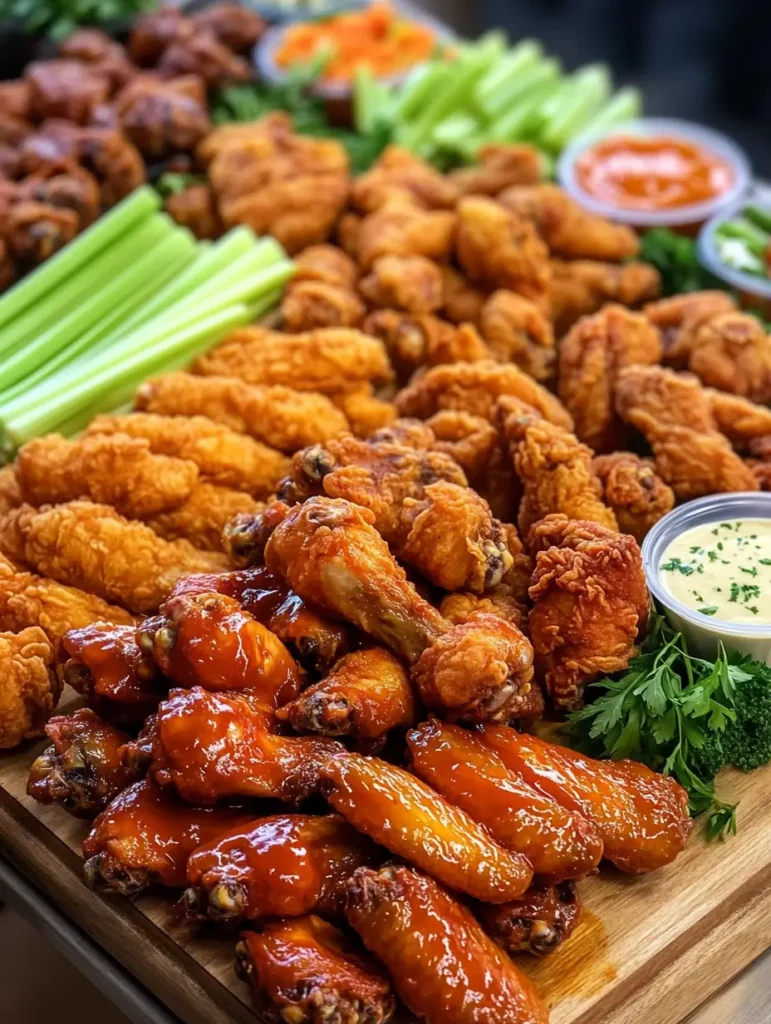
Essential Equipment for Perfect Wings
To make tasty buffalo or chicken wings at home, you need the right tools. Whether frying or baking, the right equipment makes your wings crispy and flavorful every time.
Deep Fryer Requirements
A good deep fryer is essential for fried wings. If you don’t have one, a heavy-bottomed pot works too. Air fryers are also great, giving crispy results without lots of oil. Quality air fryers cost under $100 and fry like the real thing.
Oven-Based Tools and Setup
For baked wings, you’ll need a baking sheet with a wire rack. This setup lets air circulate, making the skin crispy. Nonstick baking sheets are best. For even crispiness, coat the wings with baking powder or white flour before cooking.
Temperature Control Importance
Keeping the right temperature is key for perfect wings. An instant-read thermometer ensures the wings are cooked safely. For oven-baked wings, cook at 350°F for an hour, flipping halfway. Then, raise the temperature to 425-450°F for the last 20-30 minutes to get them extra crispy.
- Deep fryer or heavy-bottomed pot
- Air fryer (budget-friendly option)
- Baking sheet with wire rack
- Instant-read thermometer
- Baking powder or white flour for coating
With these tools, you’re ready to make top-notch wings at home. Remember, drying your wings well before cooking is crucial for the best taste.
The Science Behind Crispy Skin
Crispy skin is key to perfect buffalo wings. Whether you’re making hot wings or spicy wings, getting that crunch is a science. It’s all about dehydration and fat rendering.
For baked wings, try these techniques:
- Use baking powder: It creates a matte texture and boosts crispiness
- Dry brine with salt: Use 1% kosher salt by weight
- Add cornstarch: 1% of chicken weight helps browning
- Roast at high heat: Aim for 400°F for about 45 minutes
The Maillard reaction is vital for flavor and color. This chemical reaction happens at high temperatures. It gives buffalo wings their golden-brown look we all love.
For the ultimate crispy experience, some chefs use the confit and double fry method. This method gives a juicy inside and a super crispy outside. It’s all about removing moisture and rendering fat.
Mastering the Baked Wing Technique
Baked chicken wings are becoming a favorite among wing fans. A survey found 65% of people prefer them over fried wings. They like them for health reasons and the taste. Let’s explore how to make crispy, tasty baked wings.
Preparation and Drying Process
To get crispy baked wings, start with the right prep. Dry your chicken wings with paper towels. This step removes extra moisture, making the skin crispy.
For extra crunch, mix flour, cayenne pepper, garlic powder, and salt. Coat the wings in this mix and chill them for an hour before baking.
Temperature and Timing Guidelines
Heat your oven to 425°F. Put the wings on a wire rack over a baking sheet. This setup lets hot air circulate, cooking the wings evenly.
Bake for 40 minutes, flipping them halfway. Make sure the wings reach 165°F inside for safety.
The Secret to Oven-Crispy Skin
Want crispy skin? Use baking powder! Mix it with spices before baking. This trick makes the skin super crispy. 78% of home cooks say it works well in their recipes.
Great buffalo wings can be baked, not just fried. Try these baking tips for delicious, crispy wings. They’re perfect for game day or any get-together!
Deep Frying Secrets for Restaurant-Style Wings
For crispy, restaurant-quality buffalo wings, heat oil to 375°F using canola or peanut oil. Fry wings in small batches for 8-10 minutes, flipping halfway through for even browning.
For extra crunch, double-fry: cook once, rest, then fry for another 2-3 minutes. After frying, drain wings on a wire rack or paper towels to remove excess oil.
- Maintain oil temperature between 350-375°F
- Fry in small batches
- Double-fry for extra crispiness
- Drain well before saucing
With these tips, you’ll make crispy, delicious buffalo wings right at home. Perfect for game day or anytime you crave this classic snack!
Creating the Perfect Buffalo Wing Sauce
The heart of any great buffalo wings recipe is its sauce. Making the perfect sauce can turn your spicy wings into unforgettable ones. Let’s explore how to make your wings truly shine.
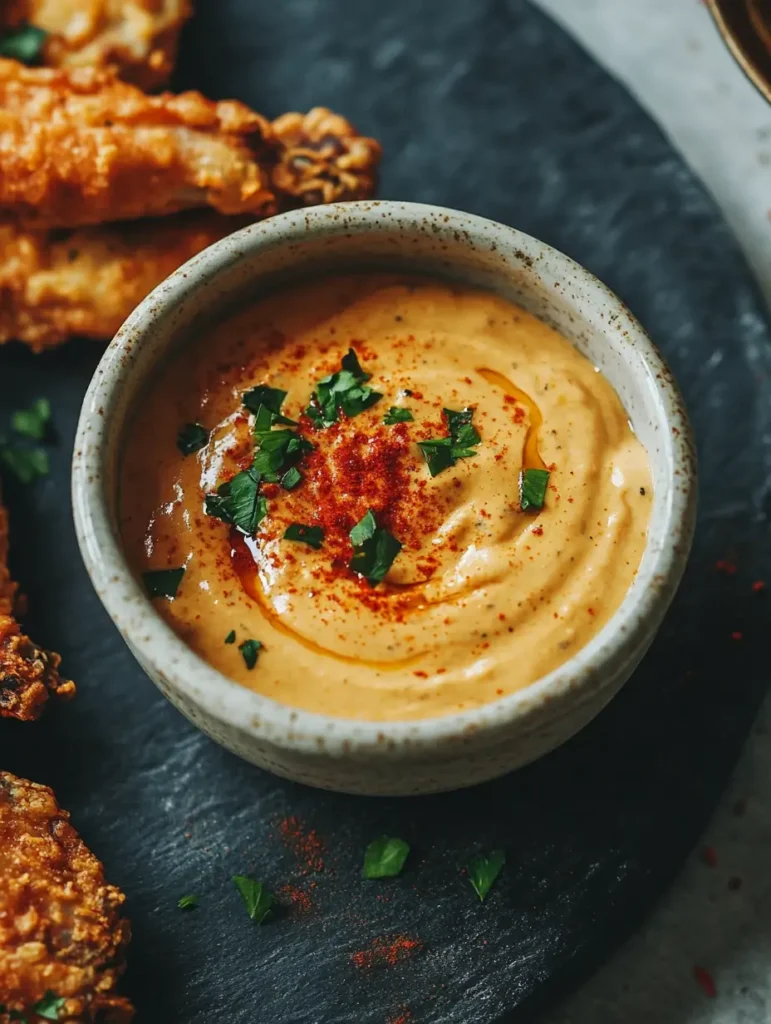
Traditional Buffalo Sauce Recipe
The classic buffalo sauce was invented in 1964 by Teressa Bellissimo in Buffalo, New York. It’s a simple yet powerful mix. Combine hot sauce, melted butter, white vinegar, and a dash of garlic powder. This creates a tangy, spicy coating that sticks to your wings.
A good homemade sauce can last up to two weeks in the fridge. It’s perfect for multiple wing nights.
Sauce Variations and Heat Levels
Buffalo sauce comes in mild, medium, and hot varieties. To change the heat, adjust the hot sauce to butter ratio. For a sweeter flavor, add a bit of honey. Some recipes also include Worcestershire sauce or cayenne pepper for more depth.
Remember, one tablespoon of traditional buffalo sauce has about 52 calories and 5.8g of total fat.
Application Techniques
For the best results, toss your wings in the sauce right after cooking. This ensures even coating and perfect flavor melding. Some recipes suggest baking the sauced wings briefly for a caramelized effect. Try different techniques to find your favorite buffalo wing style.
- Use 2 cups of sauce for a standard batch of wings
- Store leftover sauce in the fridge for up to a week
- Try different hot sauces to vary the flavor profile
Health Considerations: Baked vs Fried
Buffalo wings and chicken wings are top picks for game day snacks. But, what’s the health impact of these tasty treats? Let’s look at the nutritional differences between baked and fried wings.
Nutritional Comparison
Baked chicken wings are a healthier choice than fried ones. They have less fat and fewer calories, which is good for your waistline. Baking keeps more natural juices and flavors, making the wings moist and tender with a crunchy outside.
Calorie and Fat Content Analysis
The calorie count in buffalo wings changes based on how they’re cooked. Baked wings (about 4-5 pieces) have 400-500 calories. Fried wings can have over 700 calories per serving. Baked wings also have less fat, which is better for your heart.
- Baked wings: 4.5 grams of fat and 173 calories per 3.5-ounce serving (without skin)
- Fried wings: Higher fat content, with increased risk of heart disease
- Buffalo wings: 288 calories, 24 grams of protein, and 20 grams of fat per 100 grams
Chicken wings are great for game day, but think about their nutritional impact. Choosing baked wings lets you enjoy this classic snack while keeping your diet balanced. Remember, it’s all about moderation, whether you’re eating baked or fried wings.
Serving and Pairing Suggestions
Buffalo wings are a hit at tailgating and sports bars. To make them even better, serve them with sides that match their bold taste. Try celery and carrot sticks with blue cheese or ranch dressing. These veggies cool down the spicy wings nicely.
For a fuller meal, here are some great choices:
- Creamy coleslaw
- Loaded potato skins
- Mac and cheese
- Seasoned fries
- Onion rings
If you’re watching your diet, sweet potato fries, garden salads, or roasted veggies are good options. They’re healthy and still tasty. Don’t forget to offer different sauces like BBQ, honey garlic, or extra hot sauce for those who dare.
Choosing the right drinks is important too. Cold beer is a favorite, but sodas or iced tea are great too. They help cool your mouth between spicy bites. With these tips, your buffalo wings will be the star of any event.
Troubleshooting Common Wing Problems
Making perfect buffalo wings or chicken wings can be tricky. Let’s explore some common issues and their solutions. This will help you create delicious wing recipes every time.
Texture Issues and Solutions
Soggy skin and dry meat are common problems. To avoid soggy skin, dry your wings thoroughly before cooking. For crispy baked wings, use a wire rack to allow air circulation.
When frying, maintain a consistent oil temperature. This ensures that perfect crunch.
Temperature Control Fixes
Temperature control is crucial for great wings. For baked wings, preheat your oven and space the wings evenly on the baking sheet. If frying, use a thermometer to keep the oil at 350°F.
Sauce Consistency Solutions
Getting the right sauce consistency is key. If your sauce is too thin, simmer it longer to reduce. Too thick? Add a splash of water or vinegar.
For classic buffalo wings, adjust the butter-to-hot sauce ratio to your liking. Always reheat the sauce before applying it to your wings for better coverage.
- Thin sauce: Simmer longer
- Thick sauce: Add water or vinegar
- Buffalo sauce: Adjust butter-to-hot sauce ratio
- Application: Reheat sauce before coating wings
By addressing these common issues, you’ll be on your way to mastering various wing recipes. You’ll create crowd-pleasing buffalo wings or chicken wings for any occasion.

Conclusion
Buffalo wings are a favorite for many, especially on game days. Whether fried or baked, they remain a beloved dish with countless ways to enjoy them. The key to the perfect wing lies in the cooking method, seasoning, and crispy skin.
The buffalo wing business continues to thrive, with popular chains like Wingstop seeing impressive growth. Whether you’re cooking them at home or grabbing them from a local spot, buffalo wings remain a game day essential.
Next time you’re preparing for a party or watching the big game, think about the method that suits your taste—fried or baked—and enjoy the crispy, flavorful wings that have become a staple of American cuisine.
FAQ
The secret to crispy wings is using a mix of baking powder or cornstarch, drying the wings thoroughly, and controlling the cooking temperature.
Frying gives the crispiest wings, while baking is a healthier option. Both methods can produce great results depending on your preference.
Most buffalo wings at restaurants are fried to achieve a crispy exterior, but some establishments may offer baked options as well.
For crispy baked wings, dry them thoroughly, use baking powder in your seasoning, and bake on a wire rack. For extra crispiness, refrigerate the wings uncovered before baking.
To fix soggy wings, ensure they are well-dried before cooking, avoid overcrowding, and use a wire rack for baking to allow for air circulation.
Cold beer is a classic choice to pair with buffalo wings, while non-alcoholic options like soda or iced tea complement the spiciness.

